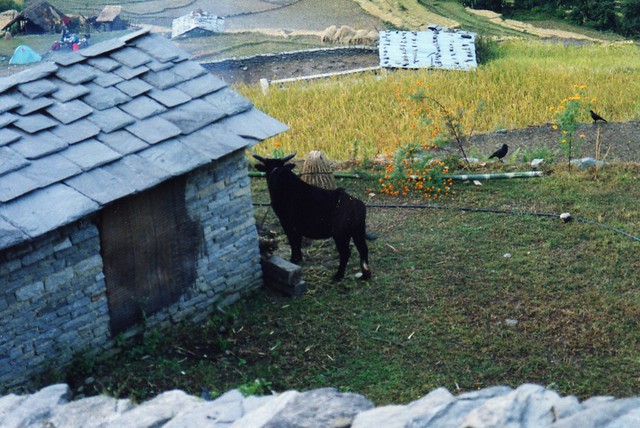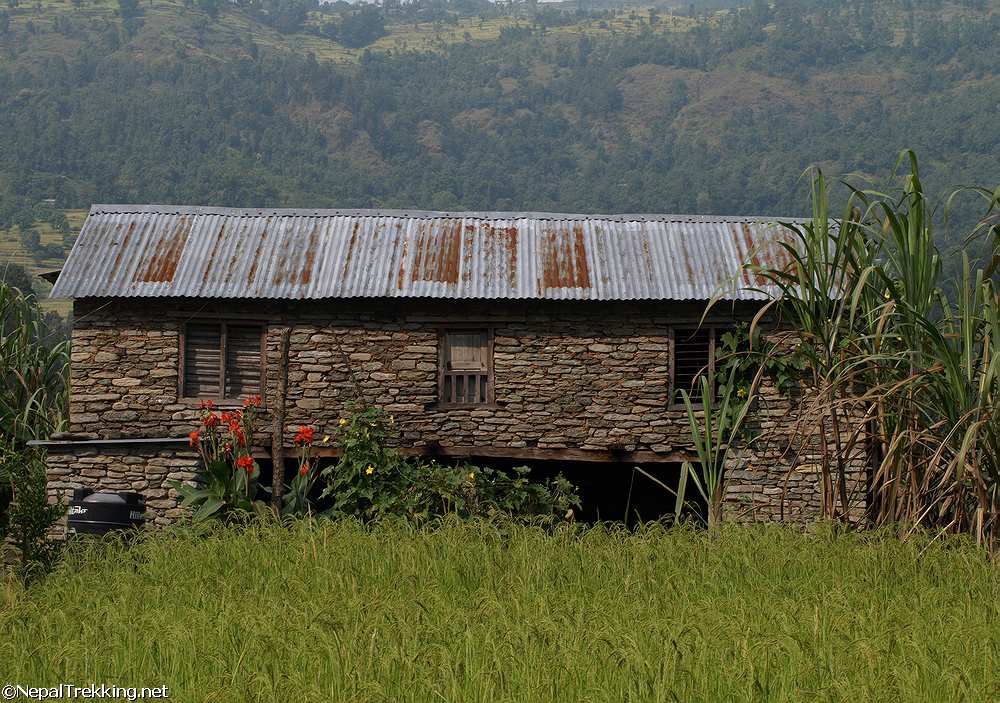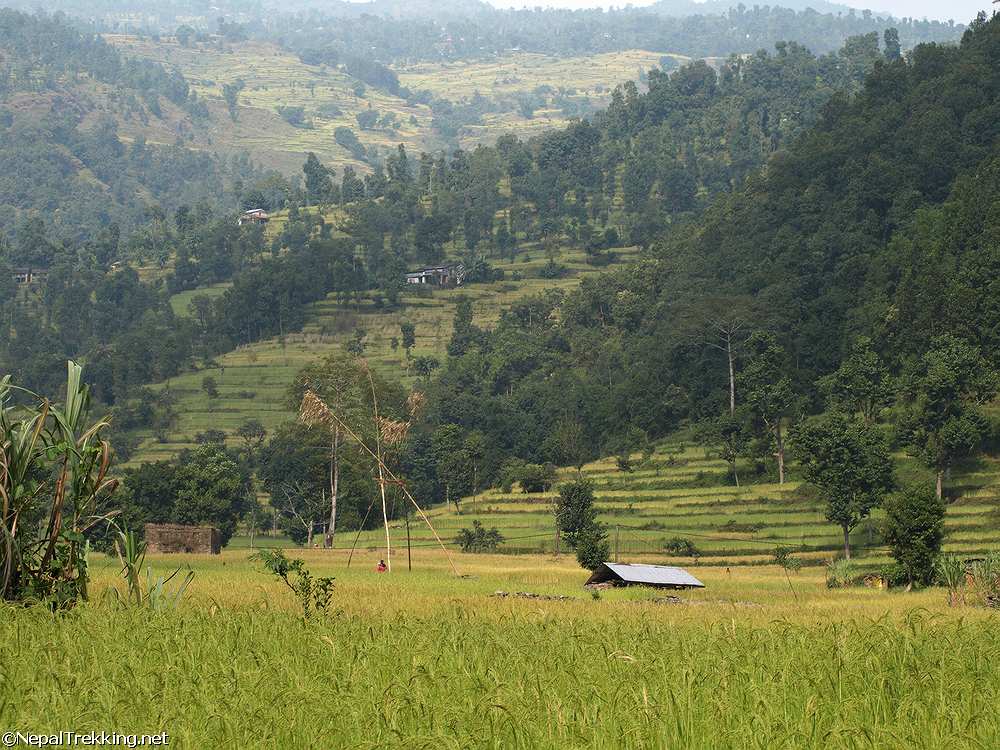Some Houses of Nepal
Hi Everyone,Sorry for keeping you all for a very long time to get your desires and wishes be fulfilled about Nepal and its life style.
My previous blog became so personal. This week, I became too busy doing office works.
Even then I was managing time to read the Amy’s blog and comments to my blog. I know its not fair with you all to keep you all waiting.
Thanks Dima for your call, finally you had to push me to write.
This time I have taken the advice of an Indonesian friend, Rianto. I hope it’s a common wish of all.

In the picture we can see huts. Whether it is a hut or a house for us, but it’s a home for them. Home a beautiful home for them.
I would like to go in detail about the construction and the materials used in making these huts. May be for some of you it can be a repetition.
The construction materials used in making them are mud, bamboo sticks, thatch, reed , rice straw , cow dung or buffalo dung and wooden bars (but very few). The wall is made of clay and net of bamboo strips/sticks. In place of bamboo some can use reed also. But bamboo is stronger than reed. The roof is thatched roof. Height is around 2 to 2 and half meters. Wooden doors are used. The doors are so small that when we have to enter into the house we need to bend our back. Windows are also very small which looks like a net made of bamboo sticks. Mixture of mud and cow dung or buffalo dung is used as paint. Dung is used as a binder in the mixture. Mixture of cement and sand is replacing this mixture now a day in modern houses.
Thatched roofs need maintenance every year. In monsoon season, i.e. June-July roofs get rotten due to rain and in windy season particularly in Teri Region (plain area) they are blown away due to strong wind. These types of huts consist of hardly three rooms otherwise there is a big open space; we can call it one room flat in modern house. You might be wondering how a family lives in a one room hut. They cook in one corner and sleep in other corner. Many people are living like this in Nepal. I can’t give you the exact percentage, its round about 10 % but this is what the condition of shelter of poor people in Nepal excluding squatter (homeless and landless) who are other 10 % of population. Sometimes I feel amazed that in this such a big world people are landless and homeless. Don’t you feel sad about it ?

This type of house is more common in Nepal. We can see, though its not that clear it is made of corrugated galvanized steel sheet. But I would like to tell little story about this house. 25 years ago it was a one story house with thatched roof. It was made two stories and roof was with galvanized metal sheet as the earning power increased. Though the metal sheet roof makes the top story too hot during the day time but people prefer it to become free from tension of maintaining the roof every year.
The wall of the house is of clay brick. For plastering mixture of mud and cow/buffalo dung has been used and for painting typical type of mud, the color you can see in the picture, its not white but we call it white mud. The typical Nepal word for this is KAMERO MATO. There is another mud of red color. I couldn’t find the photo. In my village white mud is very much used. In some places of Nepal red mud is used more that white mud. It’s because of their availability.

Now this house is same as above one, the difference in it is the plaster with mixture of cement and sand. The paint is the modern paint. It seems like retrofit in old technology to make some changes.
We can see how the changes have been taking place. We can also analyze how changes in economy bring changes in life style of people.
The house below is a modern type of house. Now a day in urban area you can see these types of houses except in some area which are stated as heritage area.

Almost everybody in Nepal have now a dream to have a concrete building with at least 4 rooms.
How a society is changing day by day.

We can see in this village the most common type of house and the distances of house with neighboring house in the village.
Some More photos:

Condition of house due to rain

Mustard flower

Stone house in Nepal






No comments:
Post a Comment